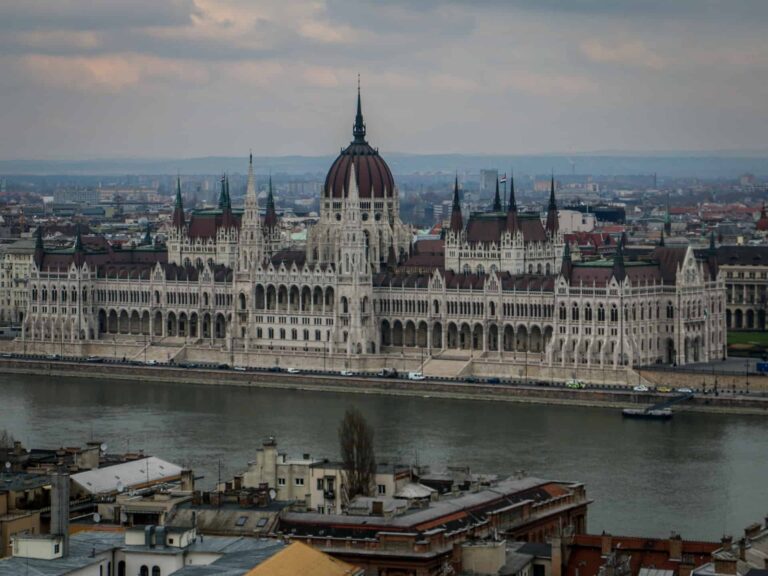Not only are parliamentary structures symbols of government, but they are also works of art that capture the strength and spirit of a country. The design of the parliament building in many nations is used to analyze the connection between this architecture and political culture.
These institutions express political beliefs and principles, help to shape political culture, and help to sustain the cultural standards of the polity across time. The background for political discussions, legislative choices, and democratic procedures is frequently one of these majestic buildings’ intricate designs and astounding magnificence.
The grandiose structures demand attention, provide an aura of authority and stability, and embody the state’s dominant presence. They arouse feelings of nationalism, national memory, power and sometimes pride. Here’s a look into five biggest parliament buildings in the world.
Table of Contents
The 5 biggest parliaments in the world
The following are the biggest parliaments buildings worldwide:
1. Palace of the Parliament, Bucharest, Romania
The Palace of the legislative, on Dealul Arsenalului in the heart of Bucharest, Romania, holds the title of largest legislative building in the world. This enormous building, also known as the People’s House. It has an outstanding height of 84 meters, a stunning area of 365,000 m2, and a volume of 2,550,000 m3.
Materials of Romanian origin were used to emphasize the structure’s opulence.
The Chamber of Deputies, three museums, the senate and an international conference center are all located within the 23 parts of the grandiose edifice. It contains eight levels below earth. The final of which is an anti-atomic bunker connected to the major state institutions by twenty kilometers of catacombs designed to protect the populace from the dreaded nuclear war.
2. Sansad Bhavan, New Delhi, India
The Sansad Bhavan in New Delhi, which is home to the bicameral legislative bodies of India, is the next building on the list.
The Ashoka Chakra, a representation of unity and continuity, is a circular shape that is featured on the 2.9-hectare Parliament House. The structure features a circular exterior with 144 columns, is encircled by spacious gardens. It incorporates Indian iconography like jails, chajjas, that evoke old Indian craftsmanship.
The building’s distinctive blend of Indian and Western styles of architecture is seen in the conspicuous use of red sandstone. The centerpiece of Indian democracy, its central hall, contains Rajya Sabha and Lok Sabha.
3. The Capitol, Washington, D.C., United States
The Washington Monument which is 1.4 miles away and Lincoln Memorial, 2.2 miles away may be seen from the United States Capitol, which is situated in Washington, D.C.
Neoclassical in style, this famous structure is a representation of American democracy. The Capitol is 751 feet and 4 inches long from north to south, with a ground area of 175,170 square feet and floor space of roughly 16.5 acres. It counts five floors, with about 850 doors, 658 windows (108 in the dome alone), and about 540 rooms.
The Statue of Freedom lies atop the spectacular dome, which serves as the focal point of the Capitol. The layout of the structure includes materials from ancient Rome and Greece.
Read also: The 10 nations with the highest political stability rates
4. Hungarian Parliament Building, Budapest, Hungary
The Hungarian Parliament Building in Budapest is one of the most impressive structures in Hungary. With its Gothic Revival architecture and location on the banks of the Danube River, it serves as a prominent landmark in the city.
Constructed between 1885 and 1904, the building is 268m long, 123m wide, and 96m high. It is Budapest’s largest building and the third-largest parliament building in the world. It consists of 691 rooms, 10 courtyards, and 12.5miles worth of stairs.
One of Hungary’s most stunning buildings is the Hungarian Parliament Building in Budapest. It is a well-known landmark in the city due to its Gothic Revival style construction and placement on the banks of the Danube River.
The edifice, built between 1885 and 1904, is Budapest’s largest structure and the third- biggest parliament building in the world. It is 268 meters long, 123 meters wide, and 96 meters high. There are 10 courtyards, 12.5 miles of stairs in it and 691 rooms.
The structure’s elements are embellished with frescoes, stained-glass accents, and statues. It was designed with a focus on the symbolism and significant political and historical statements it needed to convey. The ceiling displays Renaissance-style architectural components, while the baroque floor plans and façade embellishments convey a gothic feeling.
5. Palace of Westminster, London, United Kingdom
The Palace of Westminster is located in Westminster, a district of central London. The House of Lords, and The House of Commons, which together make up the British parliament, are housed in the Gothic-style structure. 1834 saw a terrible fire that completely destroyed the old palace.
The rebuilt palace features lavish faces with golden pinnacles and rulers of England sculptures that reflect in the Thames river. The palace’s southwestern and northwestern ends are home to the 98-meter-tall Victoria tower and Big Ben, respectively. The palace’s stonework, made of magnesian limestone, deteriorated with time because of weather conditions of the site and impoverished quality.
Read also: From global power shifts to political instability: the main geopolitical challenges in 2023












